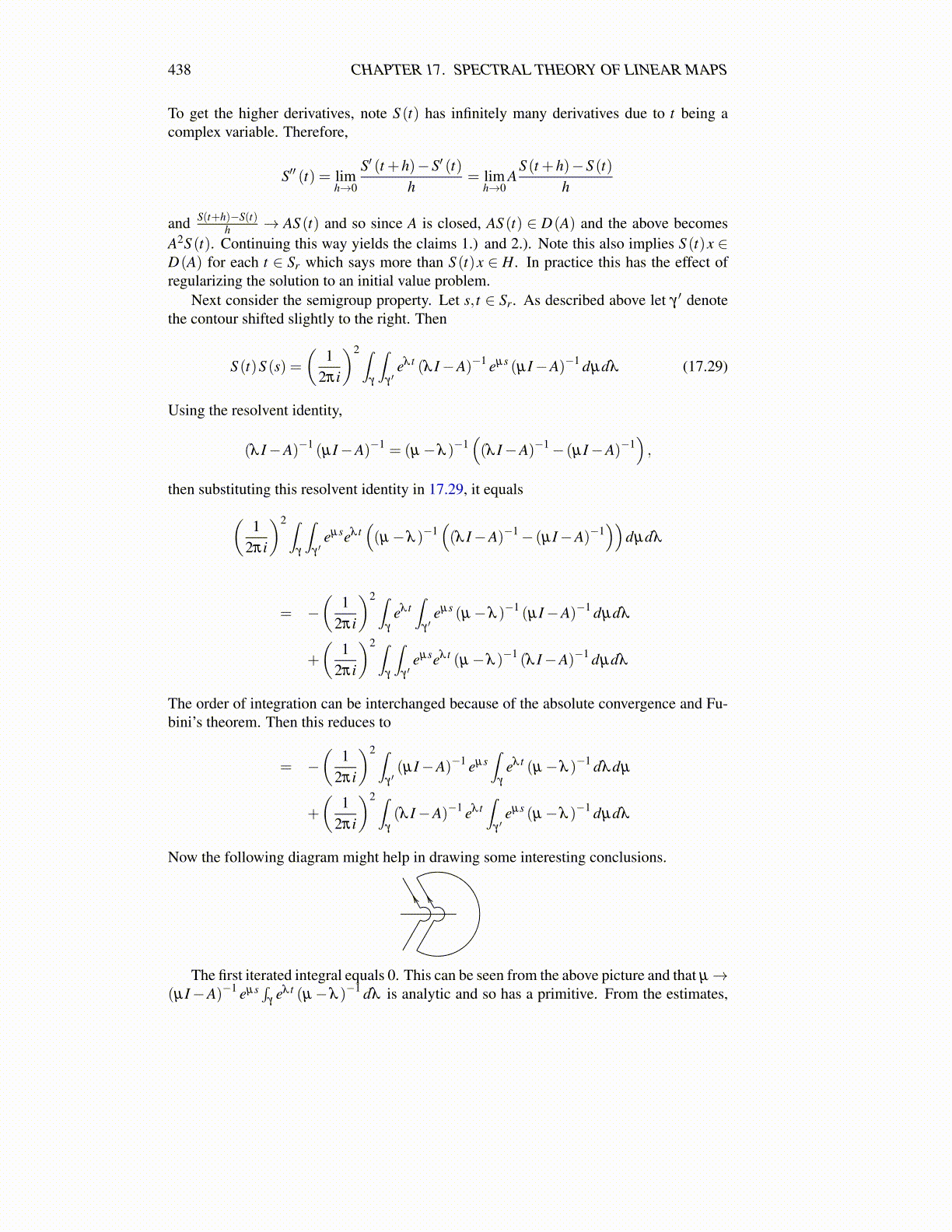
438 CHAPTER 17. SPECTRAL THEORY OF LINEAR MAPS
To get the higher derivatives, note S (t) has infinitely many derivatives due to t being acomplex variable. Therefore,
S′′ (t) = limh→0
S′ (t +h)−S′ (t)h
= limh→0
AS (t +h)−S (t)
h
and S(t+h)−S(t)h → AS (t) and so since A is closed, AS (t) ∈ D(A) and the above becomes
A2S (t). Continuing this way yields the claims 1.) and 2.). Note this also implies S (t)x ∈D(A) for each t ∈ Sr which says more than S (t)x ∈ H. In practice this has the effect ofregularizing the solution to an initial value problem.
Next consider the semigroup property. Let s, t ∈ Sr. As described above let γ ′ denotethe contour shifted slightly to the right. Then
S (t)S (s) =(
12πi
)2 ∫γ
∫γ ′
eλ t (λ I−A)−1 eµs (µI−A)−1 dµdλ (17.29)
Using the resolvent identity,
(λ I−A)−1 (µI−A)−1 = (µ−λ )−1((λ I−A)−1− (µI−A)−1
),
then substituting this resolvent identity in 17.29, it equals(1
2πi
)2 ∫γ
∫γ ′
eµseλ t((µ−λ )−1
((λ I−A)−1− (µI−A)−1
))dµdλ
= −(
12πi
)2 ∫γ
eλ t∫
γ ′eµs (µ−λ )−1 (µI−A)−1 dµdλ
+
(1
2πi
)2 ∫γ
∫γ ′
eµseλ t (µ−λ )−1 (λ I−A)−1 dµdλ
The order of integration can be interchanged because of the absolute convergence and Fu-bini’s theorem. Then this reduces to
= −(
12πi
)2 ∫γ ′(µI−A)−1 eµs
∫γ
eλ t (µ−λ )−1 dλdµ
+
(1
2πi
)2 ∫γ
(λ I−A)−1 eλ t∫
γ ′eµs (µ−λ )−1 dµdλ
Now the following diagram might help in drawing some interesting conclusions.
The first iterated integral equals 0. This can be seen from the above picture and that µ→(µI−A)−1 eµs ∫
γeλ t (µ−λ )−1 dλ is analytic and so has a primitive. From the estimates,